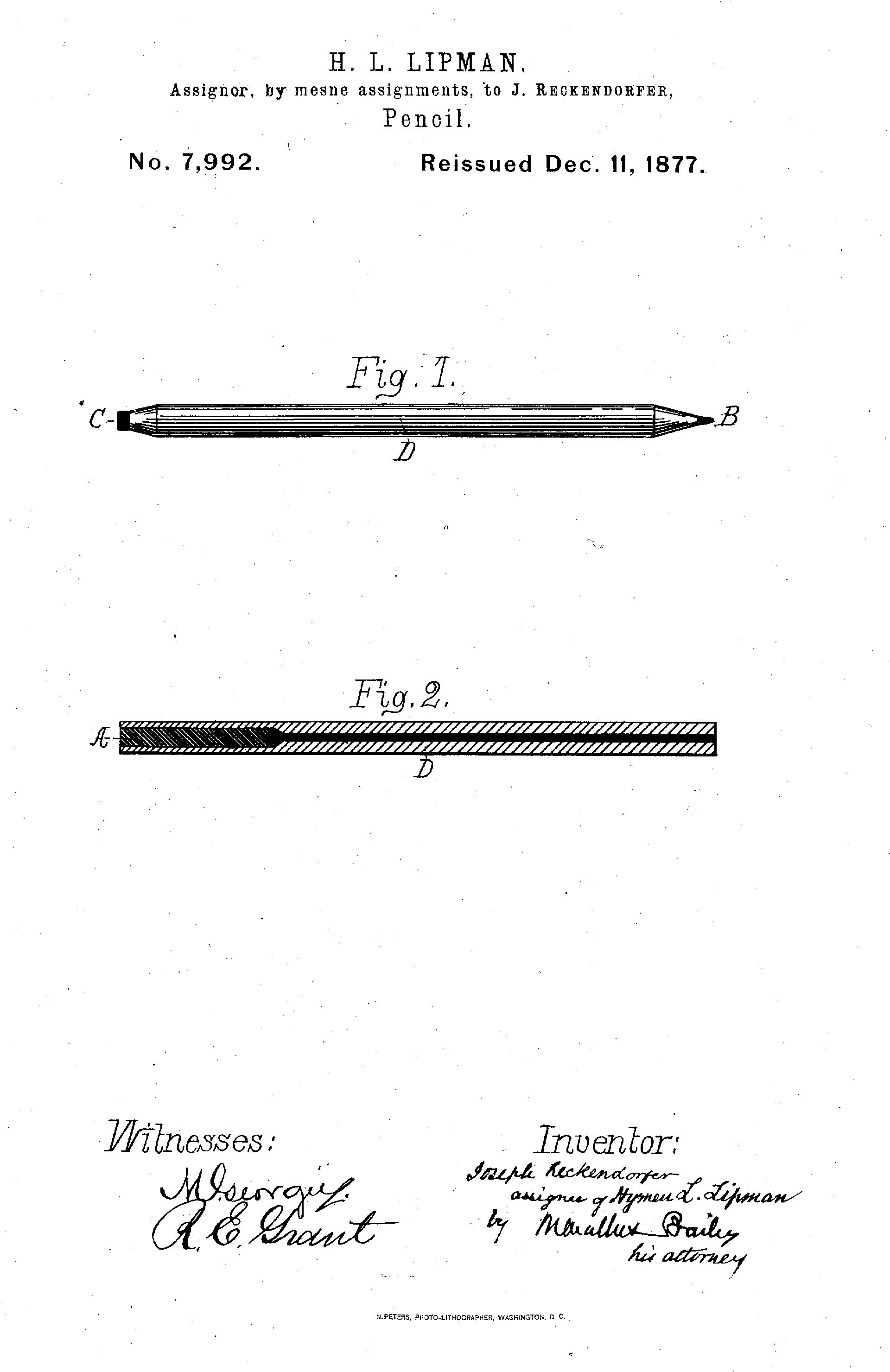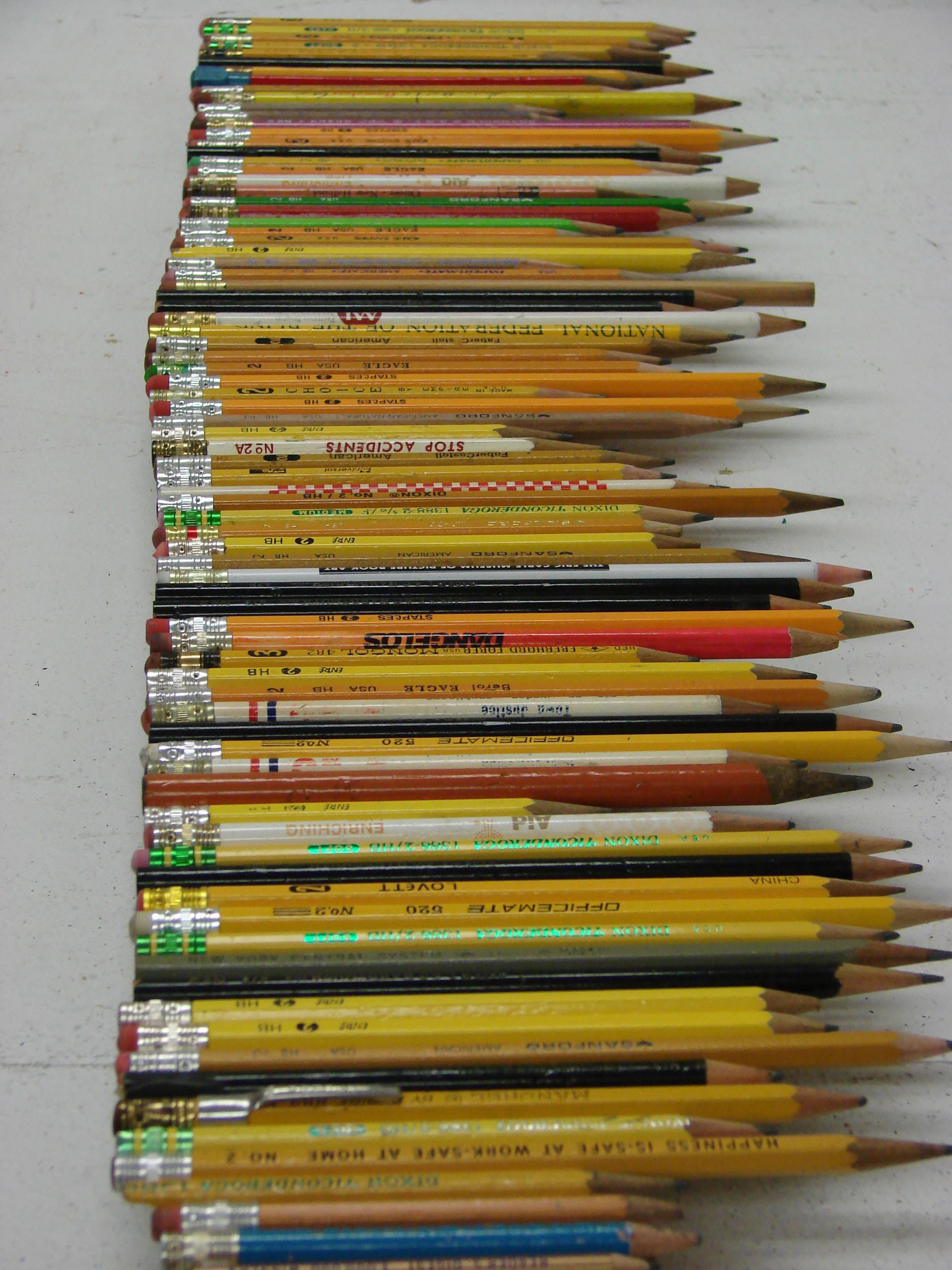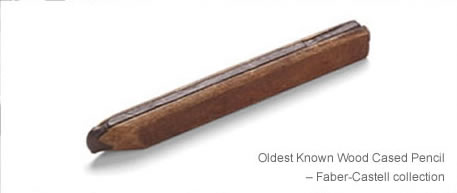It was once said that the pen is mightier than the sword. Perhaps, however, it is actually the well known but often neglected cousin of the pen that is the mightiest of all. This graphite utensil, or more accurately the little rubber bit connected to it, is best known for its forgiveness to perfectionists, artists, Sudoku enthusiasts, and test-takers alike. With a few simple flicks of the wrist, lines are erased never to be seen again. Thus, the pencil is the go to medium for most artists and architects beginning a new work. However, it is often forgotten that before the invention of a wood cased pencil with an attached eraser in 1858 by Hymen Lipman, things were not done quite as easily.
The earliest form of a pencil was much closer to a paintbrush than the modern day interpretation. According to Henry Petroski, author of The Pencil: A History of Design and Circumstance, the Latin word penicillum was used to describe a small brush that closely resembled what is now known as a pencil. This brush, constructed of a hollow wood tube filled with neatly arranged animal hairs, could be used to write and draw thin lines. It is not known precisely when the first graphite pencil was invented, although one of the first true descriptions and a picture of one comes from physicist Konrad Gesner in 1565. Petroski describes Gesner as a very educated man whose life was centered around reading and writing. Petroski also mentions though that a wooden graphite pencil was likely used before this illustration, as there were references to a “new discovery for writing” by Johann Mathesis the previous year. Neither of these men received credit for the invention of the pencil; they were simply noting the incredible benefits this discovery could give to a scribe or even ordinary person in the late sixteenth century.
It is interesting to note that both Mathesis and Gesner were so overwhelmed by the discovery of this new writing tool that they saw fit to include it in their writings. On the contrary, today the pencil is such an integral part of our routine lives that we do not even give it notice.
According to Ben Block, author of “Life-Cycle Studies: Pencils,” the closest ancestor to our well-known graphite companion was made from graphite found in Borrowdale, England. Shepherds there discovered large deposits of pure graphite and found that it was easy to cut and wrote very well. They used this material to mark their sheep and created their pencils by wrapping a slice of graphite in string. He also mentions that the earliest erasers were loaves of bread. By rubbing the bread against the paper it removed the graphite from the surface, much like an eraser would today. It was not until one man from Philadelphia, decided that he did not want an old loaf of bread on his desk any longer that a pencil with an attached eraser was born.

On March 30, 1858, Hymen Lipman was granted a patent for creating the first wood- cased pencil with an attached rubber eraser, revolutionizing classrooms and art studios alike. The patent was then bought by Joseph Reckendorfer, who, in his patent application, explained the construction of the pencil. Basically, at one end of the wood casing the lead or graphite is laid in a hollowed out interior groove, forming what would be considered half of a modern pencil. On the other end of the casing a wider groove is carved and a stick of rubber eraser is laid and glued. By constructing the pencil this way either end could be sharpened. Reckendorfer states,
In making mathematical, architectural, and many other kinds of drawings in which the lines are very near each other, the eraser is particularly useful, as it may be sharpened to a point to erase any marks between the lines; and should the point of the rubber become soiled or inoperative from any cause, such cause is easily removed by a renewed sharpening, as in the ordinary lead-pencil.
Unfortunately, Robert Lunsford notes that the patent was later revoked by the Supreme Court when it was challenged by a German firm, Faber-Castell, that attached the eraser using a metal ferrule. Lipman invented neither the pencil nor the eraser, he simply combined the two so the invention was considered invalid. Still, Hyman Lipman greatly contributed to the prevailing design of our beloved pencil and without his contributions bread might still be the norm for correcting mistakes!
Throughout childhood the pencil-eraser combination has been the standard writing utensil, allowing for the mistakes that children will most certainly make while learning new concepts. Yet, at one time this addition to the classroom was considered controversial. Block says that school teachers feared an increase in carelessness in children’s work due to the extra appendage on the pencil. This may have been true but it seems that the ability to work faster and being less nervous about making an error has only increased productivity, and the pencil has become one of the world’s most useful and popular writing tools.
After the addition of the eraser there has been one more major step in the evolution of the classic yellow pencil. Mechanical pencils have improved the graphite side of the pencil, making it finer and as adaptable as the eraser. The idea of a “renewable” eraser seems to have carried over from Lipman’s design and it is very easy to be able to replace an eraser if it becomes soiled or too small.
Where would we be without the convenience of the attached piece of rubber on the opposite side of the business end of a pencil that was provided by Lipman? There would certainly be more loose erasers bouncing around classrooms, and an increased risk of not having anything at all to correct a grammar, spelling, or mathematical mistake. Mismarking a Scantron sheet for SATs, standardized testing, or any other exam at University level would be much harder to amend without the precision of a smaller eraser, and artists would have a much harder time erasing lines that are very close together. Not only is it more precise but it seems to provide a more efficient way to get any writing done. Without having to stop and put the pencil down to find a bulky eraser much less time is wasted, and more time is spent putting thoughts on paper. Wasting time something all Americans have come to despise and every second counts. All-in-all, this small yet very important development is one that is not often the subject of complaint and is in no way a hindrance to the classroom environment; instead it is a tool that leads to increased productivity.
So is it really the pen that is mightier than the sword or is it, in fact, the pencil? The pencil has endured for hundreds of years and has evolved into something that has been at the fingertips of inventors, architects, mathematicians, artists, and scientists for just as long. The graphite wonder is the foundation of modern day knowledge; the pen merely makes sure it is never forgotten.
Sources:
- Block, Ben. "Life-Cycle Studies: Pencils." Worldwatch Institute: Vision for a Sustainable World. 30 Apr. 2010. 25 Sept. 2010 <http://www.worldwatch.org/node/6422>.
- Petroski, Henry. The Pencil: a History of Design and Circumstance. New York: Knopf, 1990. 7-41.
- Lunsford, Robert. "Today Is Pencil Day!" The Roanoke Times. 30 Mar. 2010. 20 Sept. 2010. <http://www.roanoke.com/extra/wb/241559>.
- United States. United States Patent Office. Improvement in Pencils. By Joseph Reckendorfer. Google. 27 Sept. 2010. <http://www.google.com/patents?printsec=abstract&zoom=4&id=PvQfAAAAEBAJ&o....


